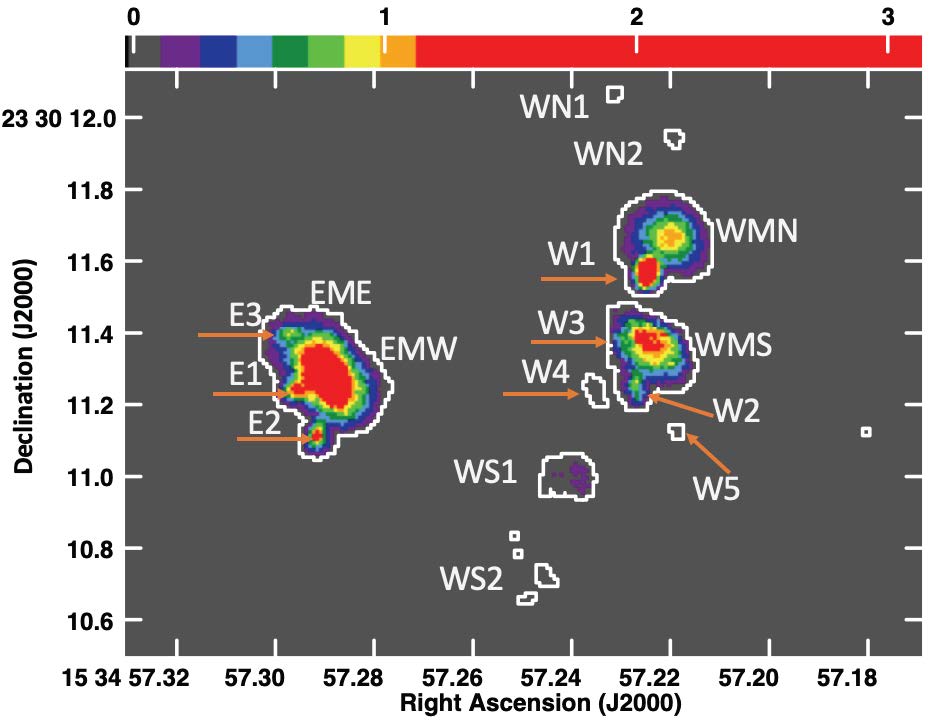
The rest of the story for the OH MM Emission in Arp 220
Willem Baan, J.N.H.S. Aditya, Tao An, Hans-Rainer Kloeckner

The interacting system IC 4553/4, also known as Arp 220, has become a prototype host galaxy of extragalactic OH MegaMaser emission. Currently some 120 OHMM systems have been detected and show that extragalactic masering is a widespread phenomenon. Since the discovery of the OHMM in Arp220, extragalactic masering activity has indeed been detected for water vapour, formaldehyde, and methanol. An early proposal suggests that powerful masering events would result from amplification of a radio continuum background by inverted molecular populations in the foreground but a detailed verification of this scheme has largely been missing.
Higher resolution interferometric studies of Arp220 to determine the emission structure show that MERLIN observations under-resolve the source and only show large scale emission regions, while global VLBI and EVN observations over-resolve the source and only show very compact emission regions. However, a combination of MERLIN and EVN observational data at intermediate resolution show multiple compact and extended emission regions that delineate the orientation of the two interacting galaxy cores.
The data also shows two velocity systems at each of those locations. Since the compact regions associate with star formation regions in the central regions of the galaxies they determine the (more accurate) systemic velocities of the East and West galaxy cores. The other emission components at these multiple locations have a velocity that is roughly 100 kms-1 lower than those systemic velocities and these components appear to be associated with a foreground region in the large scale molecular structure that envelopes the whole system and results from the galaxy merger/interaction. Molecular material at the two nuclei at a higher velocity does not show masering action.
Considering that the nuclei in Arp220 are very luminous FIR emitters, the bulk of the OH emission in Arp 220 may thus be explained by a superposition of foreground molecular material on the background radio continuum in the presence of an FIR pumping agent. A similar superposition scenario would also apply for H2O disk masers and extended emission regions, for formaldehyde and methanol emitters, and further extragalactic masering events. In addition, such a superposition scenario would also provide an easier and more plausible interpretation for many Galactic masering events.
Willem Baan (XAO and Astron)
J.N.H.S Aditya (Sydney)
Tao An (SHAO)
Hans-Rainer Kloeckner (MPIfR)
The paper: The OH Megamaser Emission in Arp220: the rest of the story, 2023, MNRAS, 523, 5487